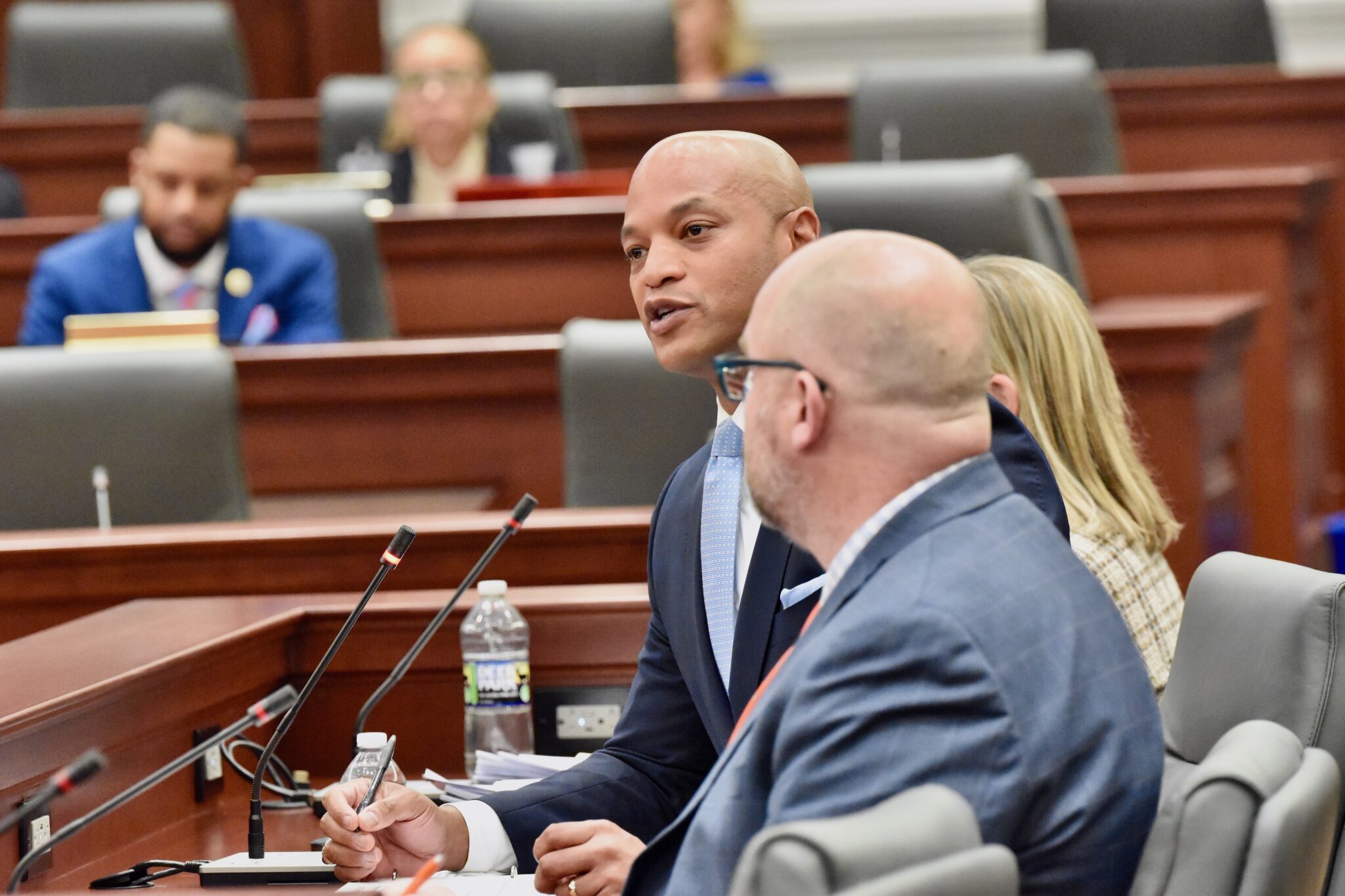“There’s something happening here,
what it is ain’t exactly clear…”
— Buffalo Springfield, (“For What It’s Worth”)
I am willing to bet that most Marylanders reading this article have never heard of the “AHEAD Initiative.”
You are not alone. There was no bill introduced. No legislative hearing was held. There was no floor debate. No up or down vote in the Maryland General Assembly.
Despite its sweeping scope and massive potential cost, the AHEAD Initiative, short for Advancing All Payer Health Equity Approaches and Development, entered Maryland’s policy bloodstream with barely a whisper. And yet, it may prove to be the most consequential and financially burdensome healthcare program Maryland has undertaken since the creation of Medicaid.
So… what is AHEAD?
AHEAD is a new federal health reform model designed by the Centers for Medicare and Medicaid Services. It aims to control healthcare costs, improve equity, and restructure how states deliver and pay for care by blending clinical services with social programs, such as housing assistance, food access, transportation support, and behavioral health integration.
In other words, it transforms the traditional health care model into a sweeping platform for population-level social engineering.
In early 2024, Maryland became the first state in the country to be approved for participation in the AHEAD program. The Moore administration signed onto this large spending commitment without legislative approval. Incredibly, none was required. The agreement was struck between Governor Wes Moore, then-Health Secretary Dr. Laura Herrera Scott, and the Biden Administration. Its goal is to redesign substantial portions of Maryland’s health care infrastructure and deliver specific cost savings and “equity outcomes” over the next decade.
Maryland is now the pilot project. The national laboratory. The guinea pig.
It is important to understand that AHEAD is layered on top of Maryland’s existing and already unique “all-payer” hospital system. Under the all-payer model, Maryland is the only state in the country where all insurers (including private plans, Medicare, and Medicaid) are required to pay the same fixed rates for hospital services, which are set by a state regulatory commission. This unified payment structure reduces administrative complexity, limits cost growth, and stabilizes hospital revenues.
In return, Maryland receives billions of federal dollars and holds a rare federal waiver to set Medicare rates independently. It has worked successfully for decades.
Notwithstanding, AHEAD goes far beyond hospital billing and payment reform. It obliges Maryland to integrate a much broader range of social services into its health care delivery model, with services not previously covered by the longstanding all-payer system.
These additional social services include publicly funded non-clinical programs such as permanent supportive housing for chronically ill individuals, food delivery for at-risk populations, ride services for medical and non-medical appointments, expanded behavioral and addiction services, and community-based care coordination efforts.
The state is now responsible for building the infrastructure to manage and fund these services on a large scale.
But here is the part that should give every taxpayer pause: this new framework was not enacted through the democratic process. AHEAD was not introduced in a bill. It was not voted on by your elected representatives. It did not pass through a committee, nor did it undergo rigorous legislative fiscal impact analysis reviewed by the Legislature’s budget analysts or the public.
Instead, it was adopted through an executive agreement. And with it, Maryland has committed to a nine-year comprehensive transformation of its healthcare delivery system, with an unknown and potentially unsustainable price tag.
AHEAD requires Maryland to build out new regional bureaucracies, expand primary care subsidies, and integrate state-funded social services into Medicaid and other payer systems.
Looks like window dressing for a Moore presidential campaign at your expense, doesn’t it?
While federal startup money is modest (just twelve million dollars over several years), the actual long-term obligations for the state are wide open. While no official fiscal note has been released, and no regulations have been proposed, it is reasonable to expect that Maryland’s obligations under AHEAD could reach hundreds of millions, and potentially over one billion dollars annually, as the state expands its responsibility for housing, transportation, and other non-medical services tied to federally mandated “health equity” goals.
This is all happening while Maryland already faces a projected multibillion-dollar structural deficit, compounded by unfunded education mandates under the Blueprint for Maryland’s Future. AHEAD may be the second fiscal time bomb waiting to explode in taxpayers’ wallets, this time buried in the health care budget instead of the schools.
The state will be required to meet stringent federal performance benchmarks. If Maryland falls short, the Centers for Medicare and Medicaid Services can revoke its waiver authority to set Medicare rates, a unique power Maryland has held for decades. That could destabilize hospital revenues across the state. Hospitals could potentially close.
Things could be worse… the Trump Administration could discover the one-of-a-kind deal Maryland has with its all-payer system and question why Maryland (a deep blue state) gets billions of federal dollars to pay for the uninsured, underinsured, and hospital write-offs, and eliminate our decades-old successful system. The AHEAD program and all the traditional costs all other states bear will then fall back onto Maryland taxpayers… and insurance premium payers.
If the Trump administration decides to retreat from the Centers for Medicare and Medicaid Services’ AHEAD model, Maryland could be left with massive programmatic costs and no federal backstop to help fund them. All of this is happening under the radar, without public scrutiny or proper transparency.
Sometimes the guinea pig gets slaughtered.
Does anyone remember the Governor or the Secretary of Health discussing this on the news or in any open forum where questions may be asked of them?
I do not recall any town hall, public briefing, or televised announcement explaining the goals, the risks, or the cost. A program that obligates the state to spend this much tax money over a decade should have been widely advertised with the enthusiasm of an elementary school ribbon cutting… especially if it is such an “impressive” revolutionary program.
I once remember a Governor who said he believed in transparency. I remember promises of open government, listening tours, accountability to the people, and governing in the sunlight rather than behind closed doors.
Transparency, however, is not what you say after the fact. It is what you practice before the commitment is made. Transparency requires that you trust citizens enough to tell them what you are doing before you obligate their tax dollars, especially on a massive scale.
So here are a few questions worth asking; questions that Governor Moore and his team should answer.
- How much will the AHEAD Initiative cost Maryland taxpayers annually by the year 2033?
- What services or programs will be reduced or eliminated to pay for it?
- What guardrails are in place to prevent uncontrolled spending growth?
- Why was the General Assembly bypassed entirely for something of this magnitude?
- What specific services is the state now obligated to provide under AHEAD that were not previously offered?
- How will AHEAD’s success or failure be publicly measured, and who will be held accountable if it falls short?
- What bureaucratic infrastructure is proposed, and what regulations are being promulgated for this initiative?
Marylanders deserve an honest discussion about the costs and tradeoffs of this initiative, not just slogans about “equity and innovation.” Because eventually, someone will have to pay for it. And that someone will be the Maryland taxpayer.
If the Governor believes this is a sustainable, transparent, efficient, and affordable approach to health care reform, he should make the case openly, publicly, and with quantifiable numbers.
Until then, the AHEAD Initiative will remain what it already is: the largest state spending program you have never heard of.
Clayton A. Mitchell, Sr. is a life-long Eastern Shoreman, an attorney, and former Chairman of the Maryland Department of Labor’s Board of Appeals. He is co-host of the Gonzales/Mitchell Show podcast that discusses politics, business, and cultural issues.










